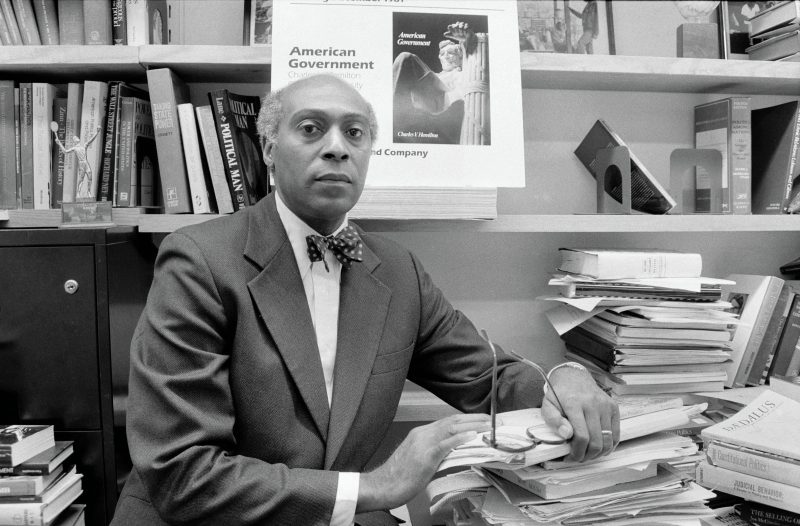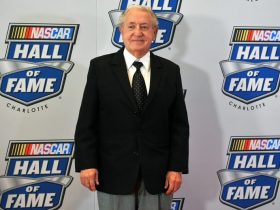Charles V. Hamilton, a self-described academic activist of the Black Power movement whose landmark 1967 manifesto with student organizer Stokely Carmichael reframed the civil rights struggle by calling on Black people to undermine America’s “institutional racism” on their own terms, has died in Chicago at 94.
The death on Nov. 18 — confirmed by his friend, South African professor Wilmot James — was only disclosed recently because of Dr. Hamilton’s request for privacy. The news was first reported by the New York Times.
Dr. Hamilton did not declare himself a militant or revolutionary, but his views often broke ranks with established groups such as the NAACP or the Southern Christian Leadership Conference, which sought broad political and multiracial coalitions. Dr. Hamilton increasingly stressed the imperative for Black communities and other minorities to take greater control of their own destinies.
His encouragement of Black-led economic and social development — essentially building new systems alongside existing ones — was portrayed as a counterweight to the racism that he said was embedded in everything from bank lending to law enforcement. Dr. Hamilton’s use of the term “institutional racism,” which he popularized, became part of the foundational statements for many Black nationalists and others.
“This directly and specifically means the alleviation of Black dependency,” Dr. Hamilton said at Harvard University in 1968. “It is incumbent upon Black people to control their own communities because, if they don’t, somebody else will.”
That philosophy was the core of “Black Power: The Politics of Liberation,” the 1967 book that brought together Dr. Hamilton from academia and Carmichael, a firebrand leader of the Student Nonviolent Coordinating Committee, a civil rights group.
The partnership was a study in contrasts. Dr. Hamilton was a pipe-smoking professor who eschewed bombast and often told his students to avoid angry rhetoric and abide by his oft-repeated appeal, “show me your data.” Carmichael (who later took the name Kwame Ture) rose through civil rights street battles and was building alliances with the militant Black Panther Party.
During a protest rally in Greenville, Miss., in 1966, Carmichael gave an electrifying speech in which he called for “Black power.” He did not coin the term, but his speech thrust the idea of Black Power, and its many interpretations, into debates on the direction of the civil rights movement.
“I never wanted to be just a professor,” Dr. Hamilton, who spent much of his career at Columbia University, told the Annual Review of Political Science in 2018. “No, that was not it. I wanted to turn my academic life into an activist one.”
The book “Black Power” embraced the goal of nonviolence followed by the Rev. Martin Luther King Jr. and others. The treatise, however, offered a different vision about how to confront racism and bigotry. Black communities, they wrote, needed to cultivate their own leadership and institutions to show they were equal partners in the country’s future. “Before a group can enter the open society,” they wrote, “it must first close ranks.”
Black power, Dr. Hamilton told journalist Studs Terkel in a 1967 radio interview, was a “developmental process” and an attempt to redress long-standing prejudices — not a call for separatism as some critics claimed.
“We went to school, Mr. Terkel,” Dr. Hamilton said in the interview. “It was called a school of slavery and a school of segregation. And the lessons were very clear. Let me state it as bluntly as possible: You hate yourself. You are supposed to hate yourself because you are a quote ‘minority,’ you are different. You are lazy, apathetic and so forth. And you pass out of this school and pass those lessons to the extent that you believe this, you see.”
The political climate in 1967 was tense enough that the book’s publisher, Random House, asked for an author’s statement that made clear the book’s nonviolent intentions. In the note, “Black Power” was described as a “political framework and ideology” that proposed an alternative “for this society to work out its racial problems short of prolonged destructive guerrilla warfare.”
Dr. Hamilton said “Black Power” may have generated momentum for community groups, Black-owned companies and other grass-roots initiatives. Yet he often insisted that the ballot box was the real forum for lasting and profound changes.
“The ultimate solutions to the problems of black people must come through political victories — Black political victories,” said Dr. Hamilton, who worked as a ward-level organizer for Chicago Mayor Richard J. Daley’s Democratic machine and later as Democratic Party strategist in several election cycles including Jimmy Carter’s successful presidential run in 1976.
“Political strategy — programs, if you will — don’t come from books,” Dr. Hamilton added. “Our work may act as a catalyst to political strategizing. … Books alone aren’t the answer.”
Charles Vernon Hamilton was born in Muskogee, Okla., on Oct. 19, 1929. His father was a car mechanic. His mother was a homemaker and moved with her children in 1935 to Chicago’s South Side.
As a teenager, he was introduced to the interplay of racial issues and politics in Gunnar Myrdal’s “An American Dilemma: The Negro Problem and Modern Democracy” (1944). After President Harry S. Truman integrated the armed forces in 1948, he served in the military in the late 1940s.
He received a degree in political science from Roosevelt University in Chicago in 1951, and a master’s degree from the University of Chicago six years later. In 1958, he was hired to lecture at the Tuskegee Institute (now Tuskegee University), a historically Black college in Alabama. From the beginning, he seemed at odds with Tuskegee’s traditions of avoiding politics and protests. His contract was not renewed in 1960.
“Unlike most Tuskegee professors, who always seemed so deferential toward the school’s traditions, Hamilton was not afraid to discuss the civil rights movement or other controversial issues in class,” wrote political scientist Wilbur C. Rich, who first encountered Dr. Hamilton while a student at Tuskegee.
Dr. Hamilton received his doctorate in political science at the University of Chicago in 1964. He was on the faculty of several universities before taking a professorship in government and political science at Columbia in 1969. He retired in 1998.
He wrote or co-authored more than a dozen books, including “The Bench and the Ballot” (1973), which analyzed how various civil rights cases were handled by U.S. District Court judges in the South.
Dr. Hamilton wrote a 1991 biography “Adam Clayton Powell, Jr.: The Political Biography of an American Dilemma,” about the New York representative from Harlem who was ousted from the House for ethics violations in 1967 but was reelected. “The Dual Agenda: Race and Social Welfare Policies of Civil Rights Organizations” (1997) was co-written with Dr. Hamilton’s wife, Dona Cooper Hamilton, a professor at Lehman College in New York. She died in 2015.
Survivors include a stepdaughter. His daughter, Carol, who was press secretary to Commerce Secretary Ronald H. Brown, was killed along with Brown and more than 30 others in a 1996 crash of an Air Force plane near Dubrovnik, Croatia.
While Dr. Hamilton was at Tuskegee, the civil rights leader King planned a visit. But the institute’s administrators were so fearful of unrest on campus that King was not allowed on the grounds for his speech, which he delivered at a nearby church.
Dr. Hamilton was the only Tuskegee professor to attend. At the time, King was seen by many as an outsider whose tactics of nonviolent protest “would only stir up more trouble for Black people,” Rich wrote.
Dr. Hamilton saw a hero in King. He went onstage and posed together for a photo that he treasured all his life.








